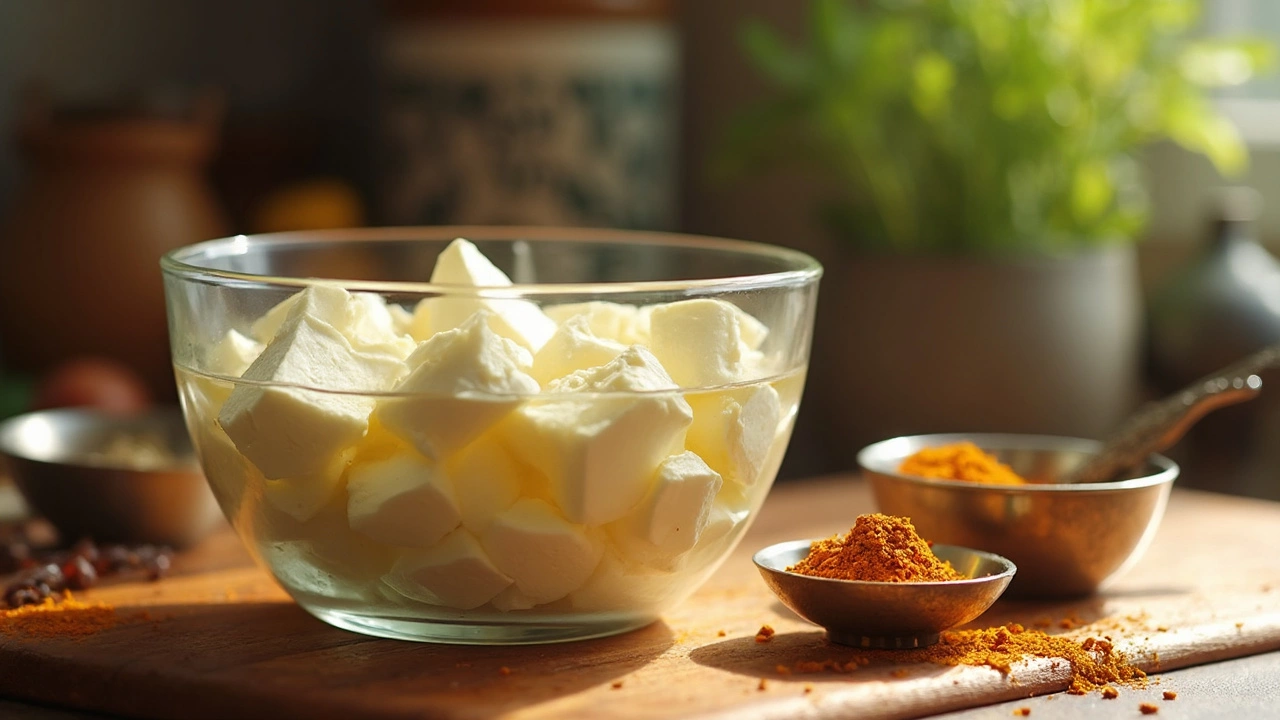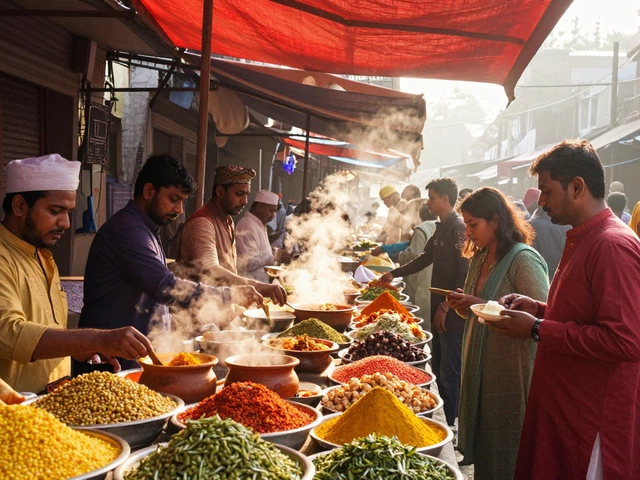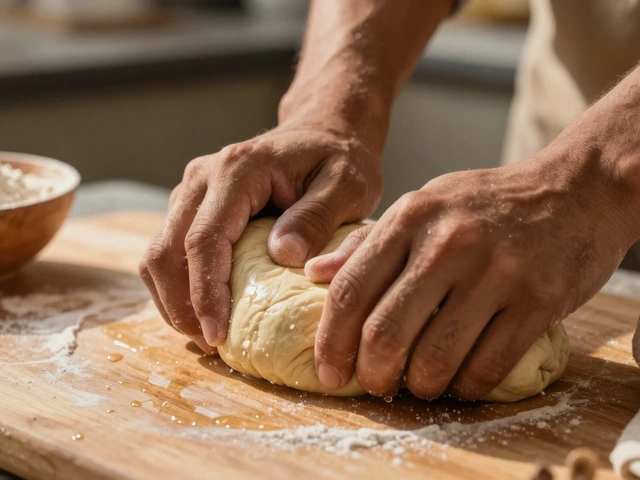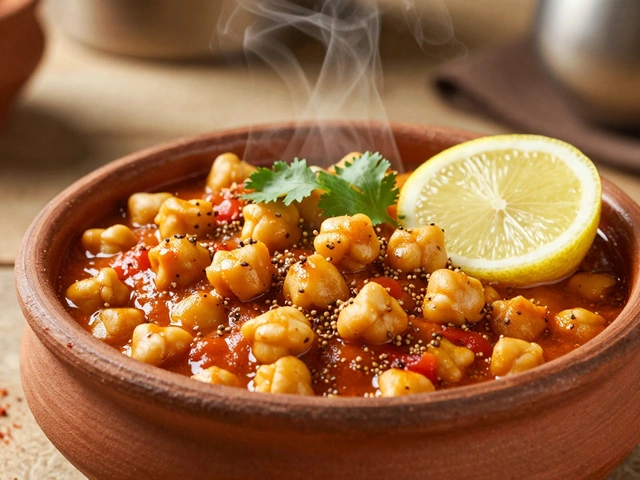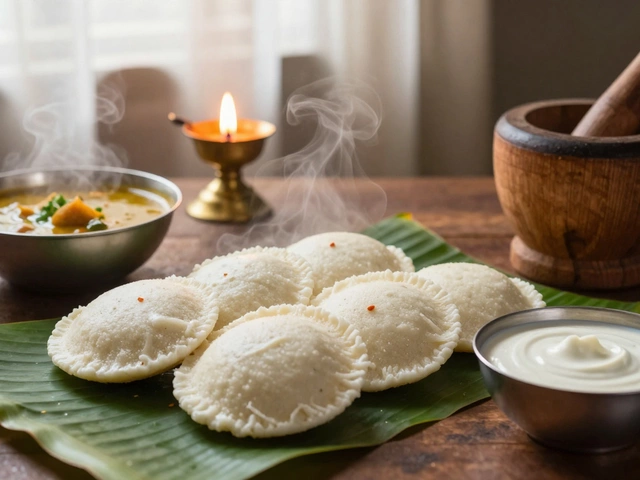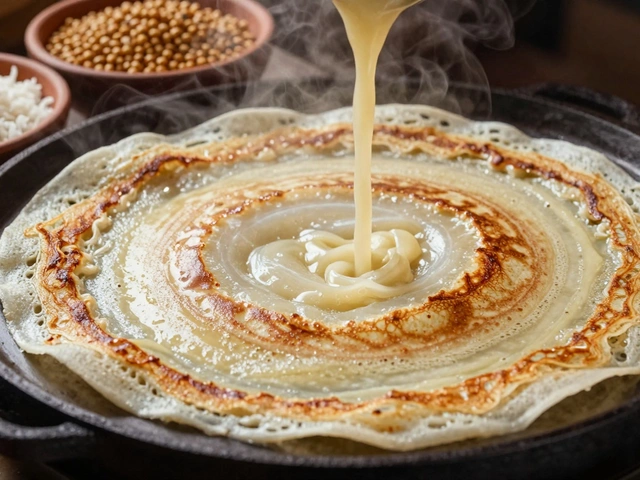If you've ever bitten into homemade paneer that felt rubbery or dry, you're not alone. This is a super common problem, and it all comes down to moisture—or, really, the lack of it.
Soaking paneer before cooking isn't just some old tradition; it actually fixes the toughest, most boring brick of paneer. Freshly made paneer loses a lot of its natural water during pressing, so it turns dense and stiff. Dunking those cubes in water brings back the softness.
Not sure if this is worth the extra step? If you skip soaking, paneer often turns chewy and doesn't really soak up the flavors of your curry or sauté. But when you let it sit in water for just 10-20 minutes, it goes from bland sponge to pillowy, tender bites that melt right in.
- Why Homemade Paneer Gets Tough
- The Science Behind Soaking
- Cold Water vs. Warm Water: Does It Matter?
- How Long Should You Soak Paneer?
- Common Mistakes (and Easy Fixes)
- Quick Tips for Softer, Juicier Paneer
Why Homemade Paneer Gets Tough
Ever notice how homemade paneer can end up feeling more like a chewing workout than a creamy treat? That tough, rubbery texture usually has a few clear causes. Let's break it down so you know what’s really happening in your kitchen.
First, it’s all about how much water you squeeze out of the curds. When you press paneer with too much weight or for too long, almost all the moisture goes bye-bye. That leaves you with dense, dry cubes. Homemade versions run into this problem even more because it's tempting to press the heck out of them to get a firm block. Fact is, store-bought paneer often has more moisture left inside so it stays softer on the plate.
Temperature matters, too. If your milk boils too hard or the vinegar/lemon juice gets stirred in too quickly, the curds toughen up early and never really recover their softness. Also, if you make homemade paneer, letting it sit out uncovered after pressing turns it even drier. That’s why leftover paneer can get extra rubbery after a night in the fridge.
- Too much pressing = dry, hard paneer
- High heat or fast acid = rubbery curds
- Not soaking after refrigeration = chewy cubes
Here's a quick look at how different steps affect the texture:
| Factor | Texture Impact |
|---|---|
| Heavy pressing | Extra firm, drier paneer |
| Light pressing | Softer, moist paneer |
| High boil | Grainy, tough paneer |
| Low simmer | Smoother, softer paneer |
If you’re making homemade paneer because you want it fresher and softer, these are the things to watch. Understanding what makes paneer tough is half the battle. The soaking step is where you bring all that softness and flavor back. So next time your paneer comes out too firm, don’t blame your recipe. It’s usually just about moisture control and a little bit of timing.
The Science Behind Soaking
So, why bother soaking paneer in water at all? It's all about protein, moisture, and temperature. When you make homemade paneer, you curdle hot milk with an acid, like lemon juice or vinegar. This causes the milk proteins to clump together—a process called coagulation. After straining and pressing, a lot of water gets squeezed out, which makes the paneer lose softness.
If you skip soaking, the proteins just keep hanging on tight. This is why that fresh block of paneer feels a bit too firm or even squeaky when you cook it. The trick is: when you immerse the paneer in water, those proteins chill out, soaking up moisture and loosening their hold. Think of it as pressing a reset button on texture.
Also, soaking helps get rid of excess lemony or vinegary tang left over from making homemade paneer. So the result is more neutral, letting your curry's flavors shine through.
- Softening effect: Soaking rehydrates the paneer, making it soft instead of rubbery.
- Temperature matters: Cold water shocks the proteins, firming them slightly for dishes like tikka or stir-fry. Warm water lets proteins relax, best for curries where you want melt-in-the-mouth cubes.
- Better mouthfeel: Rehydrated paneer absorbs sauce and spices easily.
- Milder taste: Removes any lingering acidic aftertaste.
One study done by a food science lab in India found that soaked paneer actually holds 15-20% more moisture than unsoaked cubes. This makes a serious difference when you want that creamy bite in your homemade paneer dish.
Cold Water vs. Warm Water: Does It Matter?
This is the part everyone gets tripped up on: Should you soak paneer in cold water or warm water? The answer changes how your homemade paneer turns out, seriously.
If you use cold water, it's perfect for stopping the cooking process right after you make the paneer. Plunging those cubes into ice-cold water actually keeps them firm and helps hold their shape, especially if you want to fry or grill. Cold soaking is best if you're after chunks that won't fall apart in your curry.
But if you want your paneer to soak up more flavor and get extra soft, warm water is your friend. Warm soaking opens up the paneer and lets it rehydrate faster. Many cooks who want super soft, melt-in-your-mouth cubes soak paneer in water that's about 45–50°C (so, not boiling, but definitely warm to the touch) for 15–20 minutes.
Here's a side-by-side comparison so you know what to expect:
| Water Temperature | Texture After Soaking | Best For |
|---|---|---|
| Cold (0–10°C) | Firmer, holds shape | Frying, grilling, kababs |
| Warm (45–50°C) | Softer, more tender | Curries, stews, creamy dishes |
If you're after the perfect restaurant-style butter paneer, go with warm water. For tikka or paneer skewers, stick to cold. This little temperature hack really decides whether your paneer melts in your mouth or keeps its bite. Try both and you'll see the difference right away.
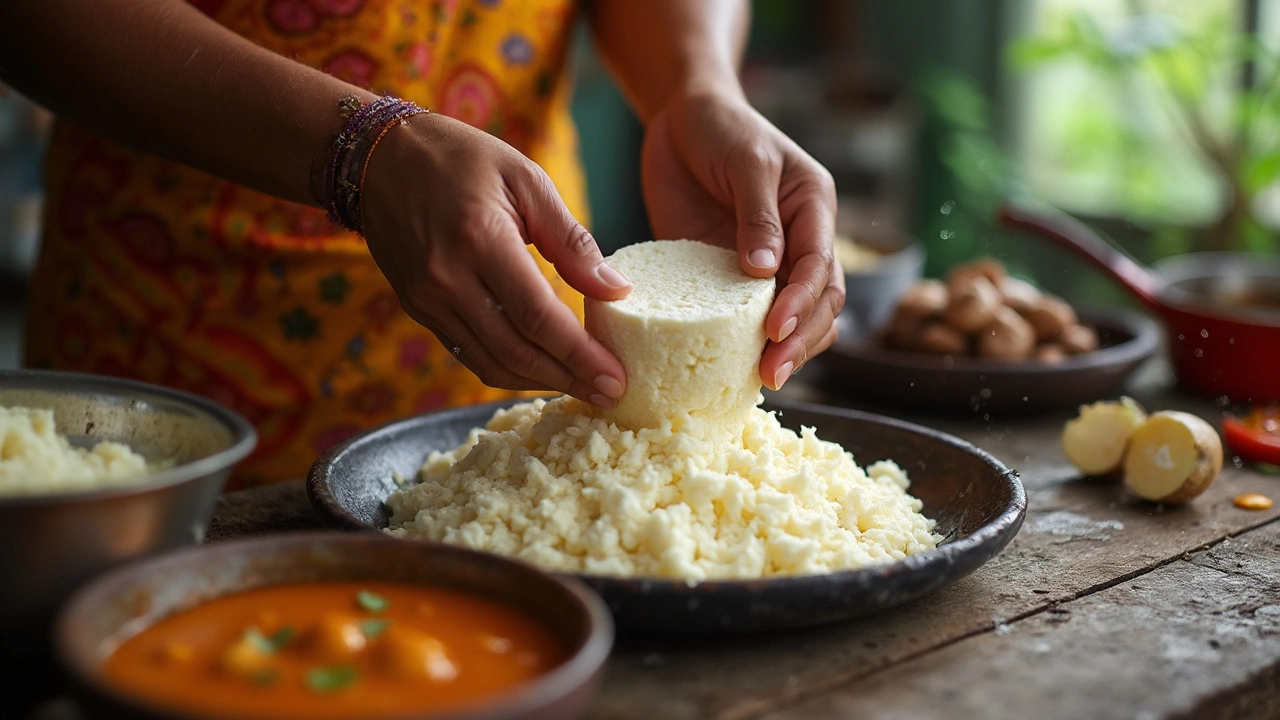
How Long Should You Soak Paneer?
The sweet spot for soaking paneer is usually 10 to 20 minutes. This is enough time for those cubes to turn soft and stay that way—even when cooked up in a hot pan or dropped straight into curry. You definitely don't need to soak it for hours like you would with chickpeas or beans. The process is quick, and the payoff is huge.
If you’re using store-bought paneer, you might need a little extra time—some brands pack their paneer extra firm, probably so it survives shipping. In that case, let it soak for 30 minutes. Homemade paneer usually responds faster, getting soft in just 10 or 15 minutes in warm water. People who’re short on time sometimes soak their paneer while prepping veggies or simmering their gravy, so it really doesn’t mess with your cooking flow.
Here’s a simple guide on soaking times for different types:
- Fresh homemade paneer: 10–15 minutes in warm water.
- Store-bought/very firm paneer: 20–30 minutes in warm water.
- If your paneer is frozen, thaw it first, then soak like above.
If you like numbers, check this out:
| Type of Paneer | Soak Time (Minutes) | Water Temperature |
|---|---|---|
| Homemade Fresh | 10–15 | Warm |
| Store-bought | 20–30 | Warm |
| Frozen (after thawing) | 20–30 | Warm |
Seriously, just a few extra minutes with water makes a world of difference. If you want really juicy, restaurant-style paneer, this little habit is totally worth it.
Common Mistakes (and Easy Fixes)
Messing up homemade paneer is surprisingly easy, but honestly, most issues are simple to fix once you spot them. Here’s what usually trips people up when soaking paneer and how to get back on track without tossing a whole batch.
- Rushing the Soak: Leaving paneer in water for under 10 minutes barely helps. It needs at least that long (some cooks aim for 20) to get that soft, fluffy feel. If you’re short on time, cut the paneer into smaller cubes—they soak faster.
- Using Hot Water: Super hot water breaks down the structure and can make paneer crumbly or rubbery. Always go for room temp or cold water. If you want it softer but not mushy, cold water is safer.
- Forgetting the Salt: If you like your paneer flavorful, try adding a pinch of salt while soaking. It helps season the cubes and can stop them from tasting bland, especially in mild curries or salads.
- Leaving Paneer Out Too Long: Paneer shouldn’t soak for hours or it’ll get fragile and start breaking apart when you cook it. Stick to under 30 minutes, max.
- Tossing Paneer Right In: Adding paneer cold from the fridge straight to a hot pan usually ends with super tough cubes. Let it soak to take the chill off and bring it closer to room temperature. It cooks more evenly that way.
Check out how these mistakes impact your finished dish:
| Mistake | What Happens | Easy Fix |
|---|---|---|
| Not soaking at all | Rubbery, tasteless paneer | Soak for 10-20 mins in cold water |
| Hot water soak | Crumbly or tough pieces | Stick with cold/room temp water |
| Oversoaking | Paniery breaks, gets mushy | Time your soak (under 30 mins) |
If you follow these quick fixes, your homemade paneer will give you that soft, rich bite every time. Sometimes the smallest tweak makes all the difference between average and awesome.
Quick Tips for Softer, Juicier Paneer
Let’s get right to it—if you want your homemade paneer to taste restaurant-level soft, there are a few quick tricks you should know. Don’t just hope the paneer will turn out tender, actually make it happen with these tips:
- Always soak paneer in water: After cutting it into cubes, drop the paneer in a bowl of lukewarm water for about 15 minutes. Fresh or store-bought, this step softens up every batch.
- Watch the water temperature: Water that’s too hot can make the paneer melt or break. Lukewarm or room temp is perfect for that nice, cushy texture.
- Don’t over-press paneer: When making homemade paneer, resist the urge to press it rock-solid. About 20–25 minutes under a moderate weight gets you just enough firmness but keeps moisture inside, helping the cubes rehydrate better.
- Add a pinch of salt to the soaking water: This isn’t just a random tip. Salted water helps the paneer season from within and bumps up the taste when you add it to curries or stir-fries.
- Cook it briefly: When you toss paneer in a pan or simmer it in gravy, avoid overcooking. Even after soaking, too much heat can dry it out again. One or two minutes in the hot curry is usually enough to let flavors settle in.
Here’s a quick cheat sheet for the basics:
| Step | Duration | Water Temp |
|---|---|---|
| Soaking | 10-20 minutes | Lukewarm |
| Pressing (when making homemade paneer) | 20-25 minutes | — |
| Cooking in curry | 1-2 minutes | Medium heat |
People often forget—most top Indian restaurants soak their paneer before using it. It’s a classic trick for super-soft cubes every time. Try these tips next time, and you’ll probably get asked what your secret is.
